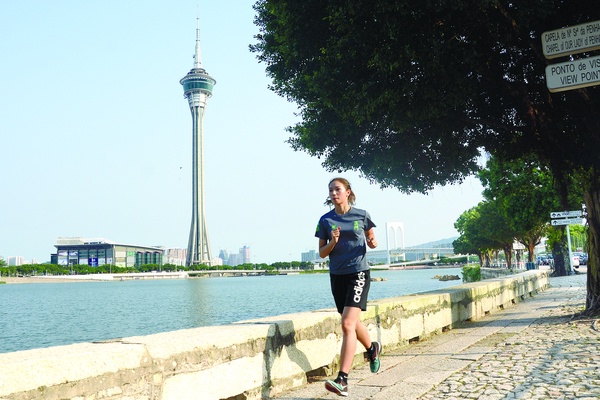When you do sports, you want to build up your fitness. So, the top priority is to promote and ensure sports safety. In winter, as the temperature is low, it is possible to catch cold after a workout and more likely than usual to incur injuries such as muscle strain, ligament tear, and even bone fracture due to the low-stretch muscles and stiff joints. Though winter is not really so cold in Macau, you still need to pay attention when doing physical exercises.
First, keep warm while doing outdoor sports, especially for the head, fingers, toes, nose, and ears. In snowfield and aquatic sports, sunglasses and sunscreen products can help protect the eyes and the skin. If the wind is strong, put on some lip balm and body lotion to prevent chapped skin. Keep the ventilation when exercising indoors. It is a good habit to prepare an extra suit of clothes, as you need to wipe off the sweat and get changed so that you won't catch a cold. The joints tend to be stiff in winter, so better choose soft-soled sneakers to reduce the impact on lower limbs' joints.
Listen to your body and don't over-exercise, because the cold air adds up your blood pressure, rate and depth of breathing, and heartbeat. Unless there is a doctor's instruction, avoid exercises when you are injured or sick. Meanwhile, a warm-up of at least ten minutes is necessary, including stretching ligaments and relaxing joints. A proper amount of carbohydrate food and water before workout can effectively reduce the danger of hypoglycemia, dehydration, and sudden death. It is very important to drink enough water, because the body water is expelled with the urine and sweat and evaporates from the lung throughout the exercise.
A physical exercise is both effective and safe only when the maximum heart rate (MHR) is within a reasonable range, of which the relevant formula is (220-age) ×0.6~0.75. Say, you are 20 years old, and the MHR should be kept at 120 to 150 bpm; for a person aged 40, it should be at 108 to 135 bpm.
Try to breathe through your nose in winter exercises, because the nasal cavity can filtrate, humidify, and warm the air to protect the trachea and the lung. In running, a headwind on departure and a tailwind on return alleviate the cold stress from strong wind after sweating out.
For winter extreme sports like snow-mountain climbing and ice-lake swimming, a minimum of one year's preparation is indispensable to adapt your muscular and cardio-pulmonary functions. Don't be impetuous. It may endanger your life.
Safety first. Get prepared and enjoy the winter sports!



